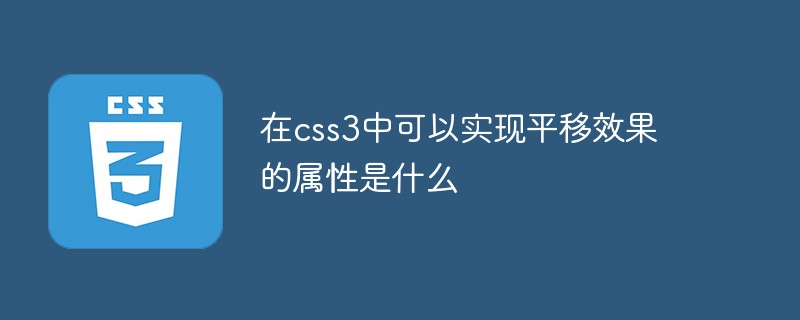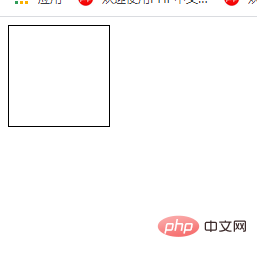Home > Article > Web Front-end > What are the attributes that can achieve panning effect in css3
The attribute that can achieve the translation effect in CSS3 is "transform". The transform attribute can be used with the translate() function to perform translation operations on elements. The syntax is "element {transform:translate(horizontal translation value, vertical translation value);}".

The operating environment of this tutorial: Windows 10 system, CSS3&&HTML5 version, Dell G3 computer.
What are the attributes that can achieve translation effects in css3
In css3, you can use the transform attribute with the translate() function to achieve elements Panning effect.
The transform property applies a 2D or 3D transformation to an element. This property allows us to rotate, scale, move or tilt the element.
The translate() function is used to define the 2D transformation of elements. That is the effect of translation.
The syntax is as follows:
元素{transform:translate(横向平移值,竖向平移值);}The example is as follows:
<!DOCTYPE html>
<html lang="en">
<head>
<meta charset="UTF-8">
<meta name="viewport" content="width=device-width, initial-scale=1.0">
<meta http-equiv="X-UA-Compatible" content="ie=edge">
<title>Document</title>
<style>
div{
width:100px;
height:100px;
border:1px solid #000;
transform:translate(100px,100px);
}
</style>
</head>
<body>
<div></div>
</body>
</html>Output result:
When the transform:translate(100px,100px); style is not added

Add transform:translate(100px,100px); after style:

(Learn Video sharing: css video tutorial)
The above is the detailed content of What are the attributes that can achieve panning effect in css3. For more information, please follow other related articles on the PHP Chinese website!